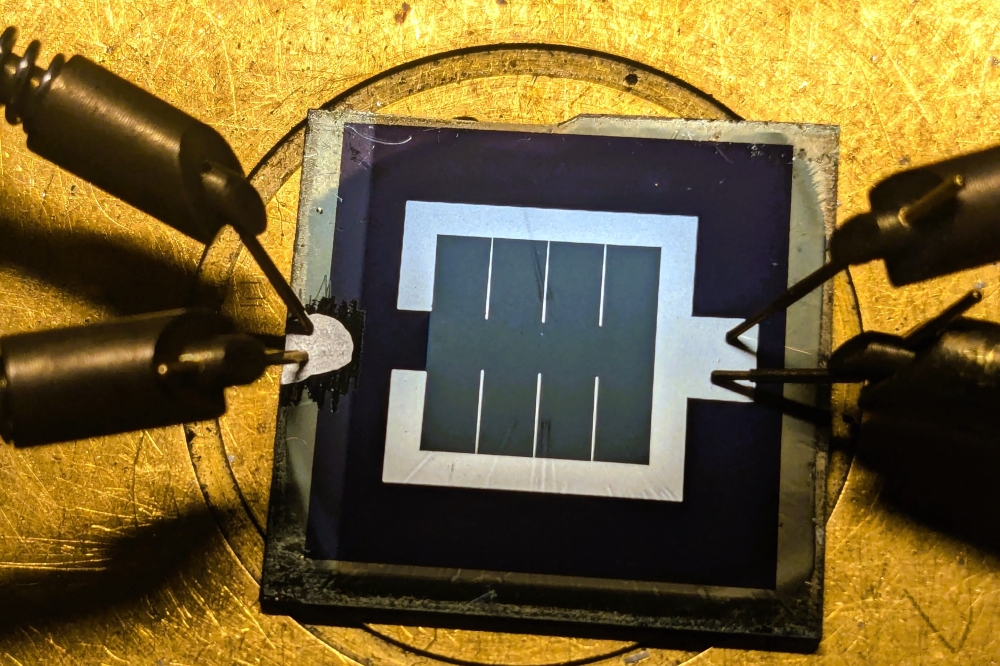Photovoltaics: designing for tomorrow

'VirtualLab' from Fraunhofer and CEA will pioneer photovoltaics to strengthen European solar cell markets. Will industry bite, asks Compound Semiconductor?
As European solar cell manufacturers strive for worldwide market share, the leaders of new photovoltaic development hub, VirtualLab, hope to help.
With traditional crystalline-silicon solar cells reaching theoretical conversion limits, many industry players are certain that alternative technologies are, at last, set to truly join the market.
One such player is III-V epitaxy and solar cell researcher, Frank Dimroth. Earlier this year, his institution, Fraunhofer ISE, Germany, revealed plans to strengthen collaboration with long-standing partner CEA Tech, France, by establishing a European 'VirtualLab'.
Already famed for breaking PV efficiency record after record with their multi-junction cells, the alliance's researchers aim is clear; to push commercial products.
The laboratory will be managed from three locations, Fraunhofer ISE in Freiburg, CEA-LETI in Grenoble and CEA-LITEN in Le Bourget du Lac. But as Dimroth highlights: "Fraunhofer and CEA have very different infrastructures in place."
According to the researcher, each has vast compound semiconductor knowledge but Fraunhofer's strengths lie in epitaxy and engineering substrates while CEA has a lot of process experience in microelectronics and CMOS device manufacture.
"Materials teams are developing modules on both sides, but we will now share knowledge and infrastructure across both places; we're only 350 km apart," he says. "This is the starting phase, but we will make this a long-term partnership."
![]() CEA Tech and Fraunhofer ISE combine forces in near-industry research with French-German "Virtual Lab".
CEA Tech and Fraunhofer ISE combine forces in near-industry research with French-German "Virtual Lab".
But starting-phase or not, developments are well underway as would be expected from one of Europe's leading PV research teams. As Dimroth highlights: "High concentration PV has a limited market, so our target is ultra-high efficiency photovoltaics."
And to achieve this, two key themes have emerged; new concepts for III-V multi-junction solar cells and advanced CPV module prototyping.
Right now, Dimroth is looking at using III-V materials on flat-plate PV modules, rather than CPV modules. High materials costs instantly appear prohibitive, but as Dimroth highlights, California-based Alta Devices is already doing a very good job of delivering high efficiency thin film, flexible GaAs-based solar cells to mass markets.
"In principle, the solar cell structure is typically in the range of four to five microns, not a lot of III-V material is being used," he says. "But [like Alta Devices] it is important to re-use the substrate, so we are working on lift-off processes."
His team is also sampling multi-junction solar cells deposited on conductive foil; these electrically conductive carrier substrates ease solar cell manufacturing and mounting of devices onto receivers. And at the same time, III-V-on-silicon growth, for PVs, is underway.
"We've been doing this at Fraunhofer for seven years and it could have a massive impact," highlights Dimroth. "We are looking into reducing epitaxy costs. Perhaps we won't need the homogeneity of layers required for laser and LEDs... so this could lead to a new generation of epitaxy for PVs."
Driving CPV forward
Mathieu Baudrit is head of Concentrator Photovoltaics at CEA Tech and intends to develop highly integrated module for low and medium concentrator PVs that will give European industry a competitive edge for future success in renewable energy markets.
His team is applying straightforward assembling techniques to Dimroth's flexible III-V multi-junction solar cells.
Here, the cells are directly laminated onto the rear side of a concentrator mirror, a novel set-up that is all about cutting system costs. The mirror acts as a heat sink and CPV receiver, reducing component count and assembly cost.
Indeed, as Baudrit highlights: "We have reduced the number of the most expensive components in the system, the front cover glass, the cell substrate and heatsink, have all been merged."
The researcher is also confident that the Virtual Lab's flexible solar cells could be integrated to consumer electronics devices, including smartphones, to charge batteries.
"When we think about integrating photovoltaics into a smartphone, we think about organic PVs, but these are not sufficiently efficient," he says. "And silicon is the same. Look at the power you need to charge a smartphone; considering the area available on a device for PVs, you are going to need very high efficiency cells."
"For these small areas, you have to go to III-V cells and when you look at the cost of the III-V solar cell compared to a smartphone, it is very cheap," he adds.
But relatively cheap or not, the technologies under developed at the VirtualLab undoubtedly need more cash to come to fruition.
Fraunhofer and CEA have each provided €1m to set up the new endeavour, but more funds twinned with industry input will be required to ensure its long-term success.
"We intend to create innovation and job opportunities in this industry, but we also need long-term research and development funds from government organisations and industry," explains Dimroth. "Soitec has been and is an important industrial partner but isn't the only company we will be targeting."
"Our competence is high efficiency PVs that will go well beyond what silicon can deliver," he adds. "But right now we require more financial resources, which we are struggling to achieve."


































